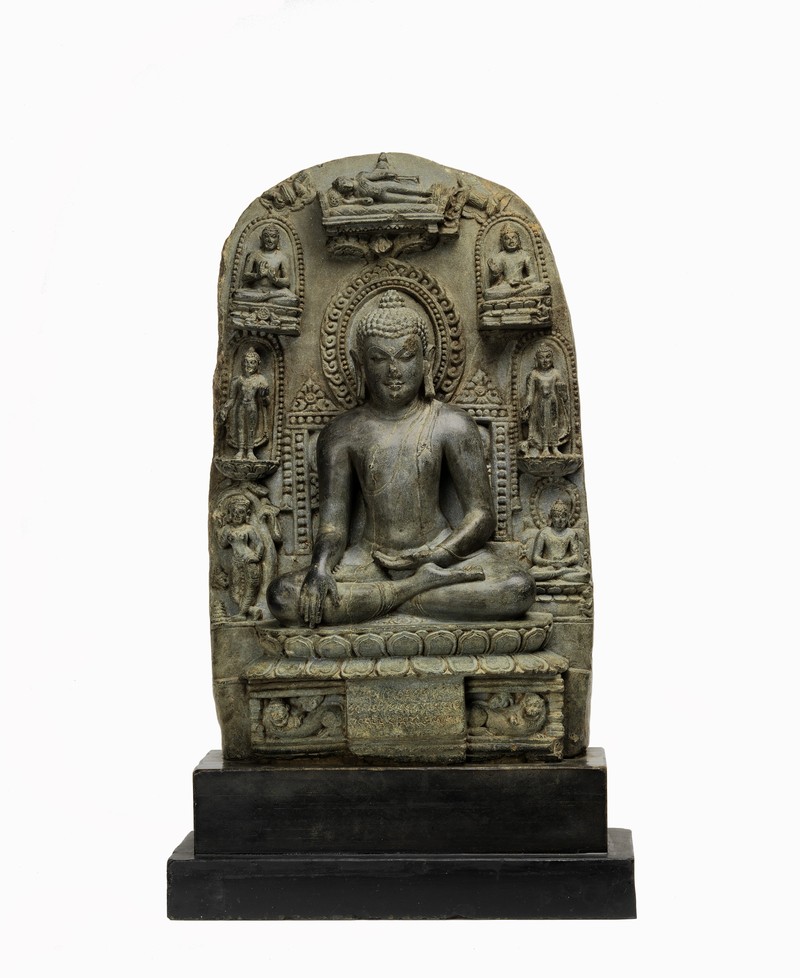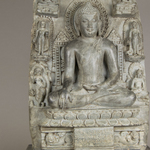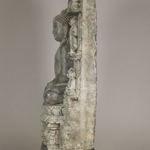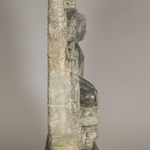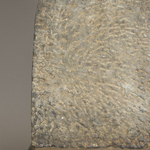Stela
29-69-4
Location: On Display in the Sphinx Gallery
From: India
Curatorial Section: Asian
| Object Number | 29-69-4 |
| Current Location | Sphinx Gallery - On Display |
| Culture | Buddhist | Indian |
| Provenience | India |
| Period | Pala |
| Date Made | 9th century - 12th century |
| Section | Asian |
| Materials | Granulite | Stone |
| Technique | Carved | Polished |
| Iconography | Buddha | Lotus | Lion | Bhumisparsa Mudra | Mara | Birth of the Buddha | Descent from Tavatimsa Heaven | Preaching the First Sermon | Wheel Of The Law | Deer | Nirvana | Taming of the Elephant | Miracle of Sravasti | Offering of the Monkey | Miracle of the Four Begging Bowls |
| Inscription Language | Sanskrit |
| Description | Buddhist stela. The Eight Miracles of Buddha. The central figure is Siddhartha Buddha seated on a lotus above a lion throne in the attitude of Calling the Earth (to witness his victory over evil) also known as bhumisparsa mudra. This took place at Bodh Gaya. Seven other scenes of significant events in his life are, from his right: 1. Birth. From the right side of his mother as she stands under a tree (at Kapilavastu). 2. Descent from Heaven. He had gone to proclaim the doctrine to his mother (Sankacya). 3. Miracle. While preaching the law, he multiplied his image to convince unbelievers of his power (Sravasti). 4. Parinirvana. His death (Kushinagara). 5. Preaching the first sermon (Deer Park, Sarnath). 6. Taming the maddened elephant (Rajagrha). 7. Offering of the monkey (near Vaisali). This stela is perhaps the earliest of the type popular in Bengal during the Pala Period, 9th-12th century CE. The scenes which may differ in detail and placement around the central figure represent the four great events of Birth, Enlightenment, First Sermon, Death, and the four secondary events. The locations at which these took place correspond to the eight great pilgrimage sites. A 6" miniature of the type, presumably carried from India by a monk or pilgrim, was recovered from the crypt of Wat Rajaburana, Ayutthaya, Thailand, built around 1424 CE. Polished black granulite. There is a Buddhist confession of faith written in Sanskrit in Bengali script below. The inscription reads: सिद्धं // ये धर्म्मा हेतुप्रभवो तेषां हेतुं तथागतो / ह्य् अवदत् तेषां च यो निरोध एवंवादी महाश्रामणः // (siddhaṃ // ye dharmmā hetuprabhavo teṣāṃ hetuṃ tathāgato / hy avadat teṣāṃ ca yo nirodha evaṃvādī mahāśrāmaṇaḥ //) "Regarding those laws which arise from a cause, the Buddha (Thus Gone One) has taught their cause and their destruction. This is the teaching of the Great Ascetic." (Transcription and translation by Dr. Benjamin Fleming). |
| Height | 40 cm |
| Width | 24 cm |
| Depth | 10 cm |
| Credit Line | Purchased from H. Kevorkian, 1923 |
Report problems and issues to digitalmedia@pennmuseum.org.


